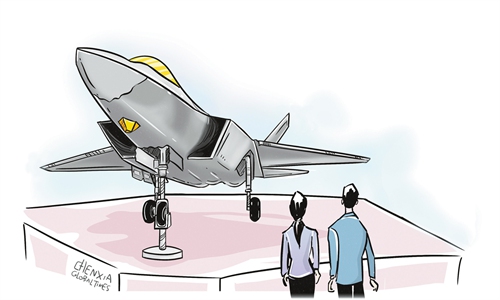
Illustration: Chen Xia/GT
With the start of the 2024-25 ice-and-snow season, China's ice-and-snow economy has become a hot topic, attracting more participants while gaining momentum. The booming of emerging sectors like the ice-and-snow industry proves that China's economy remains resilient and has great potential.
Currently, in northern China, where ice-and-snow resources are abundant, many regions are ramping up efforts to attract and welcome tourists for this winter season. For example, the 27th Changchun Ice and Snow Festival, scheduled to kick off in Changchun, Northeast China's Jilin Province, on Tuesday, will provide a variety of cultural and sports events to enrich tourists' experience with ice and snow. On Monday, in Heilongjiang Province's Harbin, one of the top destinations in China during the last winter season, local authorities posted a heartfelt letter inviting citizens and tourists to experience the unique charm of ice and snow in the city.
In recent years, China's ice-and-snow economy has gradually formed a complete industrial chain, ranging from manufacturing to tourism. From the snowy peaks of Altay in Northwest China's Xinjiang Uygur Autonomous Region to the indoor slopes of Guangzhou, South China's Guangdong Province, the ice-and-snow economy is spreading like a blanket of snow, covering various regions of the country. The scale of China's ice-and-snow economy is expected to reach 970 billion yuan ($133 billion) in 2024 and surpass 1 trillion yuan next year, demonstrating the significant economic potential of this sector.
The new opportunities emerging from the thriving ice-and-snow economy have injected confidence into the Chinese economy. The recent Central Economic Work Conference set the direction for economic development in 2025, with expanding domestic demand on all fronts identified as one of the key tasks. Against this backdrop, the ice-and-snow economy has become a growth point of interest.
Economic commentator Cui Chuangang told the Global Times that the development of the ice-and-snow industry reflects a new transformation in China's consumption patterns. He believes that although the ice-and-snow economy is not expected to constitute a giant proportion of China's overall consumption, we should be optimistic about its potential to inspire new business models and potentials. Moreover, amid this ice-and-snow boom, China is attracting an increasing number of foreign tourists as a "winter wonderland," thanks to the deepening of its high-level opening-up through measures such as further optimizing its visa-free policy. This has brought new growth points to the ice-and-snow economy.
The momentum of China's ice-and-snow economy has further debunked skepticism that the Chinese economy is "closing up" and "losing its appeal." In fact, those pessimistic voices regarding China's economic development often overlook the reality that the country boasts the world's most complete industrial categories, the second-largest consumer market and a high degree of policy coordination capacity. The ice-and-snow economy is merely a microcosm of many emerging industries that have shown great growth potential in recent years, such as electric vehicles, artificial intelligence, green technology and high-end equipment manufacturing. These facts clearly indicate that China's economy is moving toward a brighter future driven by innovation.
In the face of skepticism, the Chinese economy is proving its strong resilience and promising prospects by presenting one new highlight after another. Its future is worth anticipating and will continue to contribute positively to the world economy.



